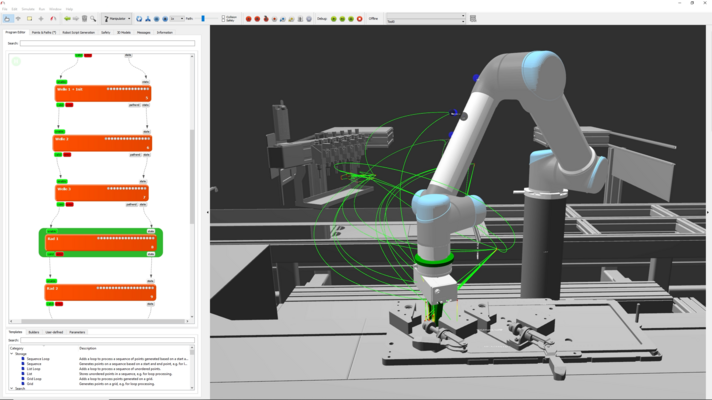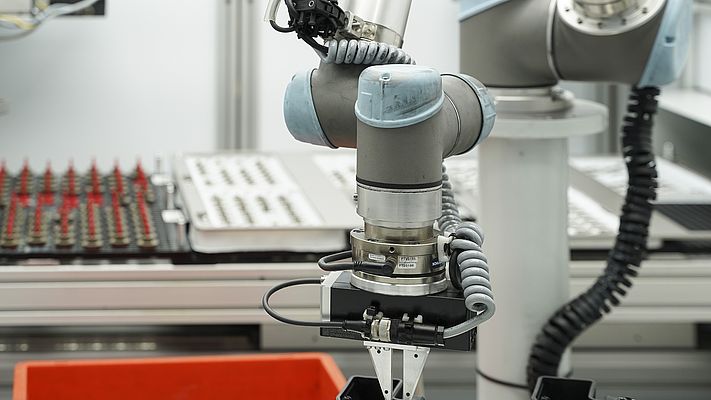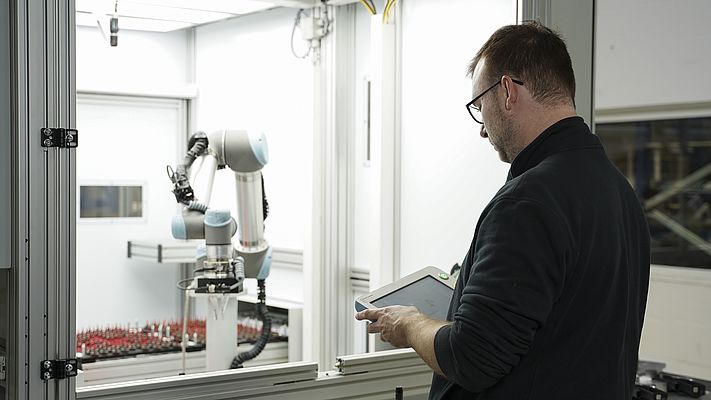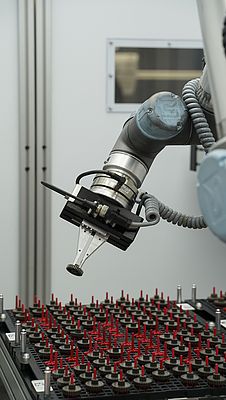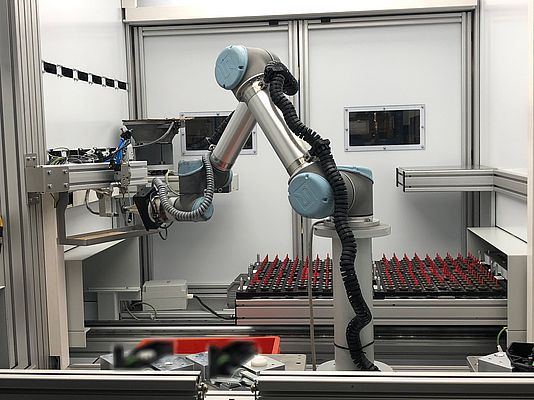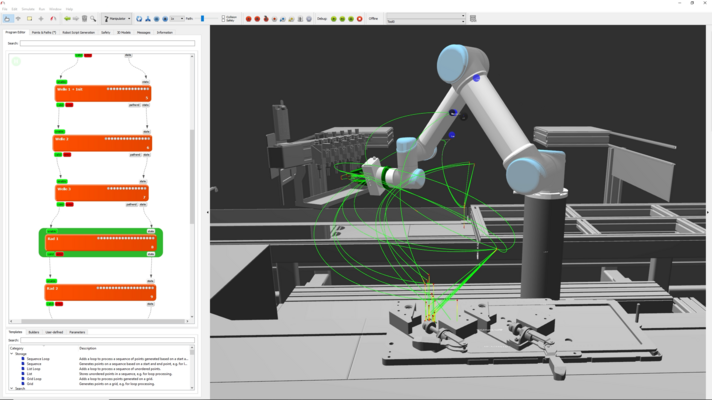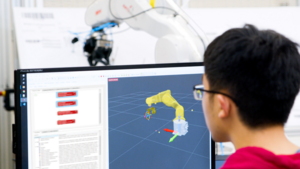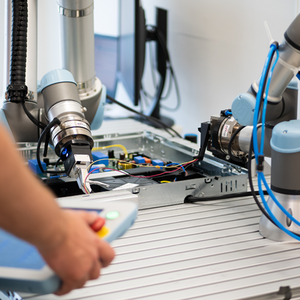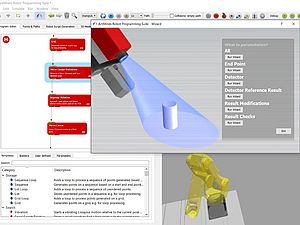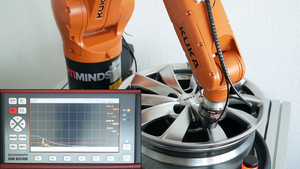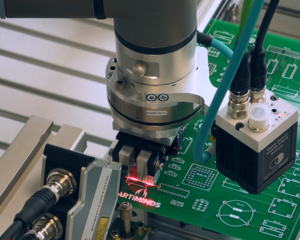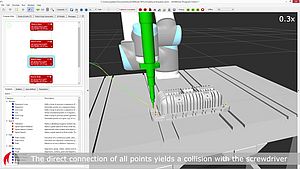Artiminds. Since its foundation in 1978, Primus Präzisionstechnik in Bückeburg, Lower Saxony, has built up a good reputation as an independent system supplier for efficient drive solutions. The family-managed company employs 110 people who develop and manufacture special gear units with power ratings of up to 100 watts for customers in the automotive sector, building automation and medical technology.
"We are a solution provider," says Managing Director Thorsten Völz. "An idea service provider, in a manner of speaking, with an affiliated production facility with a high production depth. The in-house options comprise of turning, milling, assembly and all associated sub-processes." The company has been practicing the much-vaunted Industry 4.0 for many years now, automating and digitizing as many processes as possible with the aim of maintaining a high level of repeatability and process stability, even for large volumes.
This is the case with a force-controlled pick-and-place and joining process in which small gearboxes are produced from several individual parts for a customer in the automotive industry: The task here is to fit three shafts and five gears into a gearbox housing. Before placement, the individual parts are also greased. Approximately 250,000 of these gearboxes are manufactured by Primus each year - until now manually. "This is a complex application with many process steps and different components that need to be assembled into a gear motor, which is later sealed airtight," Völz tells us. "It is therefore vital that all components are assembled completely and correctly. And this is where, unfortunately, people are sometimes the weakest link." To improve product quality and process stability and reduce costs through better dosing of the grease, Primus decided to automate this production step robotically. "We ultimately failed to have a suitable specialized machine built for this purpose," the Managing Director elaborates. The fault lies in the high number of variants and the fact that the intelligence required for the application was not available for the planned budget. "For a standard application, the perfect machine would have been available to us, producing 100,000 parts in a cycle-optimized manner," Völz recounts. "But then, we wouldn't have had any influence on changes, modifications and the different variants." That was not what Primus wanted. "We had to decide on how to proceed," explains Sascha Schwier, Technical Manager at Primus Präzisionstechnik. "Either we design the system completely for accuracy, or we equip it with intelligence so that we can also use it to manufacture other products and reproduce different process steps." A decision was made in favor of the second option. "Our concern with automation was not about optimizing cycle times, but about increasing process accuracy and achieving stable repeatability. Since we wanted to remain flexible in terms of implementation and hardware selection, we decided to start on a greenfield site and tackle our first robotic cell in-house, although we still lacked previous experience in robotics," the Managing Director sums up.
When the software solution is the key
The team first began by procuring the appropriate hardware. "Using sensor technology, we taught the robot to see and feel," says Völz. Primus equipped the robot with a camera and a force-torque sensor. An individual gripper system was added to handle the gears and shafts. The key to the smooth interaction of all parts was the manufacturer-independent software solution ArtiMinds Robot Programming Suite (RPS). "We were looking for a programming environment so that we wouldn't have to touch the source code directly," says Völz. "In the process, the RPS acted as an interface that couples all the peripherals together."
With the software, even complex sensor-adaptive applications can be easily implemented. Users program the robot using drag & drop from predefined templates - the robot code is written independently by the software. In the process, ArtiMinds RPS ensures seamless integration of online and offline programming. In this way, flexible automation solutions can be created and electrical grippers, force torque sensors, image processing systems and PLC communication can be integrated easily. Schwier explains, "For the process to run robustly, the system must be able to compensate for tolerances independently. The only way to achieve this is through intelligent communication between the components. We have practically built our special machine, yet we can still use it flexibly thanks to the algorithms of ArtiMinds RPS."
"ArtiMinds' software solution was a major building block in realizing our requirements," says Völz. "In a classically programmed environment, we would have needed significantly more test cycles and a significantly longer development period." Primus was particularly impressed by the clear and intuitive programming with the software. "ArtiMinds RPS offers many helpful functions that make work easier, such as the 3D simulation environment or the ability to switch back and forth between online and offline mode depending on requirements," lists Michael Castien, Robot Programmer at Primus Präzisionstechnik. "The very big advantage is that I can use a single platform to harmoniously integrate and control all components and sensors such as robots, cameras, force-torque sensors, grippers and motors in the process. The RPS simplifies this step and provides a uniform programming structure." When it comes to solving tricky challenges, the software can also provide quick and easy help with its wizards. "ArtiMinds RPS is a bulging toolbox, so to speak," says Castien "With the provided tools we were able to quickly and safely reach the desired result, as with the spiral search function for instance." This function block provided in the software’s template library enables the robot to conduct a force-controlled search for the insertion and joining location for the gears and shafts. "When there was no template available for a required function, the ArtiMinds support team quickly helped to find a solution without complications," says Castien.
Analysis, optimization and remote maintenance with ArtiMinds LAR
To keep an eye on the plant during operation, Primus uses another product from ArtiMinds: the Learning & Analytics for Robots (LAR) analysis software. This software provides detailed evaluations and data about the production process. "The information is based on robot movements, force-torque measurements, image processing results or error codes," explains Raimund Hartelt, Senior Business Development Manager at ArtiMinds. "These are collected automatically and stored in the database. Enriched with process information from the RPS templates, Primus can interpret the data in a goal-oriented manner with a direct view on the task to be solved and derive optimizations. Moreover, because different users need different data and KPIs, everyone can tailor their dashboard to their exact requirements."
On one hand, Primus uses LAR for process monitoring and fault detection or analysis, on the other hand also to convert process stability into key figures. "ArtiMinds LAR enables us to take a targeted approach to process optimization and troubleshooting," says Schwier. "This eliminates the need for fishing in the dark." Castien also sees this as a major advantage: "There is always a kind of demonstration effect when troubleshooting. Once you are standing in front of the system, the error no longer occurs. With LAR, I can automatically record all the data and, thanks to the seamless documentation, isolate errors within a short time." In addition, optimization potential that would not be visible to the naked eye can be easily objectified. Castien explains, "We have two robots with the same program. The analysis data from the LAR showed that there are still differences, though, and contrary to our assumption, the two systems don't run the same." Using this data, Castien was able to readjust the precision to within 100ths and, after a few runs, re-evaluate whether or not the changes had the desired positive effect.
Cooperation at an equal level
With the software solutions from ArtiMinds, Primus Präzisionstechnik was in a position to implement that flexible robotic cell that the company needed for the fully automated assembly of the small gearboxes. "We achieved our goal and were able to increase the process quality from about 90 to almost 100 per cent," Völz states with satisfaction. "Furthermore, the system gives us high flexibility since we can adapt it to new tasks or changed conditions without much effort, i.e. reprogram it independently. In addition, the robotics know-how built up as part of the project provides us with a major competitive advantage!" The gear specialists were also impressed by the trusting cooperation at eye level. "We grew together on the tasks," says Castien. "When there were challenges, we worked out solutions and ways in partnership. And we still have intensive exchanges, for example, to extend the preparation of LAR's analysis data to our needs, as we are currently doing."
Silke Glasstetter, Head of Marketing at ArtiMinds Robotics


